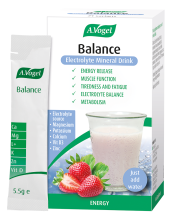What do the new guidelines say?
New guidelines on portion sizes have been released by the British Nutrition Foundation this week in an attempt to get people to eat less in order to manage the obesity epidemic that’s currently gripping the nation.
It’s been estimated that we eat around 200-300 calories too much, on average, each day and by managing our portions we could help to reduce this. The guidelines involve using our hands or simple utensils in order to measure portions of different foods and then keep track of the number of portions of those food groups across the course of the day.
Some examples of the portion sizes include:
- 2 handfuls of dried pasta shapes or rice (75g)
- A bunch of spaghetti the size of a £1 coin, measured using your finger and thumb (75g)
- The amount of cooked pasta or rice that would fit in two hands cupped together (180g)
- A baked potato about the size of your fist (220g)
- About 3 handfuls of breakfast cereal (40g)
- A piece of grilled chicken breast about half the size of your hand (120g)
- A piece of cheddar cheese about the size of two thumbs together (30g)
- About 1 tablespoon of peanut butter (20g)
- About 3 teaspoons of soft cheese (30g)
Then, from each food group, it’s suggested we eat:
- Fruit and vegetables: 5+ portions per day
- Starchy carbohydrates: 3-4 portions per day
- Beans, pulses, fish, eggs, meat and other proteins: 2-3 portions per day
- Dairy and alternatives: 2-3 portions per day
What are the positives from this?
When it comes to portion sizes, it’s definitely something we should be considering. Gradually over the years, the sizes of crockery and ultimately our portion sizes have increased quite dramatically and this may have something to do with our expanding waistlines and all the health issues which are associated with being overweight or obese. So, if we can have a rough understanding of the portions we should be aiming for, this can certainly be helpful.
However, this is only part of the issue; there are other problems too such as our intake of fat, sugar and processed foods, plus our lack of nutrient-rich, fresh foods and our sedentary lifestyles.
Now, back to the issue at hand. Let me explain my thoughts when it comes to managing portion size, in light of the new guidelines:
What’s the best approach?
1 - Eat slowly, relax and chew!

Number 1, regardless of what’s on your plate, if you’re keen to make a conscious change to your diet this New Year, my advice is to consider how you eat. In the busy world we live in (where electronic devices are often central to everything), we often eat quickly, on the go, or in front of a screen without giving it much thought. These practices are actually thought to be detrimental and could be affecting our weight.
When we eat slowly, we chew better. This means we get the most from our food (in terms of nutritive value but also enjoyment!), but we’re also much more likely to feel satisfied before it’s too late and we’ve eaten too much.
Being relaxed whilst we eat is also important. Whilst our parasympathetic nervous system is more dominant (our ‘rest and digest’ mode), funnily enough, as the name suggests, this means our digestion will be more efficient. This can help protect against unwanted symptoms or discomfort that can often crop up soon after eating.
2 - Think about what you’re eating, rather than how much
Whilst it’s useful to think about how much food you’re consuming; (great mountains of anything isn’t going to be good!) and so the new guidelines can act as a good starting point, I do believe we should have more emphasis on what we are eating rather than how much. Some potential flaws to consider when it comes to the new guidelines are as follows:
- Processed versus fresh. Interestingly, especially in the fuller list that the BNF have produced, across the different foods groups listed, there is quite a lot of emphasis on processed foods or packaged goods. These appear in the starchy carbohydrates section, the protein section, the dairy section (all the low-fat options in particular), the oils and the treats section. The only exception is the fruit and vegetable section which appears much further down the list! Generally, the longer the ingredients list the more processing that’s gone into the making of that food and therefore the greater likelihood that these foods will have adverse effects on our blood sugar levels. Plus, these foods are often more calorie dense! Interestingly, if we have a greater emphasis on fresh foods instead, these are the very foods which will contain more fibre together with nutrients such as magnesium, which will naturally help to have a more positive influence on our blood sugar responses. In turn, this will mean we can better manage cravings and our appetite.
- It all looks a bit carby. Unfortunately there seems to be a big focus on carbohydrates. The starchy carbs category appears first in the full list and worse still, refined carbohydrates such as types of white bread, breakfast cereals and other wheat-based products are a common feature. Items such as these are often low in fibre and higher in refined carbs which have a higher glycaemic index. There isn’t much mention of wholegrain options and it’s all a bit beige!
- Be cautious of the low-fat options. The other one for watching is ‘low-fat’ options. These are rife throughout the new guide and what happens when we have ‘low-fat’? Well this actually makes it much more likely that these products have a higher proportion of carbohydrates, sugar, or sweeteners. We need sufficient fats in out diet – around 30-35% to help ensure that our proportions of carbs are kept in check.
- Up the protein! There seems to be little emphasis on protein and more importantly the quality of protein. The guide features lots of meaty options, many of them processed at that, and plant-based sources of protein including lentils, beans, pulses, legumes, nuts and seeds are barely given a mention at all! And if they are, the suggested portion sizes are pretty meagre. Bearing in mind, many of these plant-based sources of protein are also an excellent source of dietary fibre.
Although the list isn’t exhaustive of course, it perhaps doesn’t set the best example. Protein, dietary fibre and sources of healthy fats are vital for helping to keep us feeling fuller for longer and if we pick the right size, portion size should come more naturally.
3 - Gradual changes are best

Whilst January is the time many of us want to make positive changes to our diet and lifestyle, fad diets or more extreme measures often aren’t the way to go. If we have to measure, weight and tally up the calories of every food or drink item we have in a day, this could soon become tiresome and we’re much more likely to fall off the bandwagon – I’m sure many of us can vouch for that!
Small changes can make a big difference to how you look and feel. By eating slower you will start to identify sooner when you’re starting to feel full and therefore when it’s time to stop eating. So, why not try this out?
Did you know that thirst can also be confused with hunger in many cases? Aim to drink at least 1.5l of water throughout the day and see if it helps to reduce the urge to overeat or snack.
Finally, if you struggle to cook fresh why not start small and just try to cook a different meal at least once a week until you get more used to it. Cooking new meals 3 times a day might be a bit much to get your head around initially.
4 - Plan your meals
Sufficient planning is one of the best kept secrets when it comes to weight loss. Plan your meals, list all the fresh ingredients you’ll need, head to the shops and be determined not to deviate! This way you’ll be less likely to pick up convenient extras, which can easily scupper your new found healthy eating regime.
5 - Listen to your body
Ultimately we need to listen to our bodies. Unfortunately starvation diets don’t work and if we deny ourselves proper food, skip meals or swap in too many alternatives that aren’t satisfying, eventually your body will resist in one way or another and you will be much more likely to revert back and end up worse off.
Eat sensibly when you’re hungry, feel the benefits of moving more and aim to eat more like our ancestors rather than too many things out of a pack!





 Looking for our products in a store near you?
Looking for our products in a store near you?



